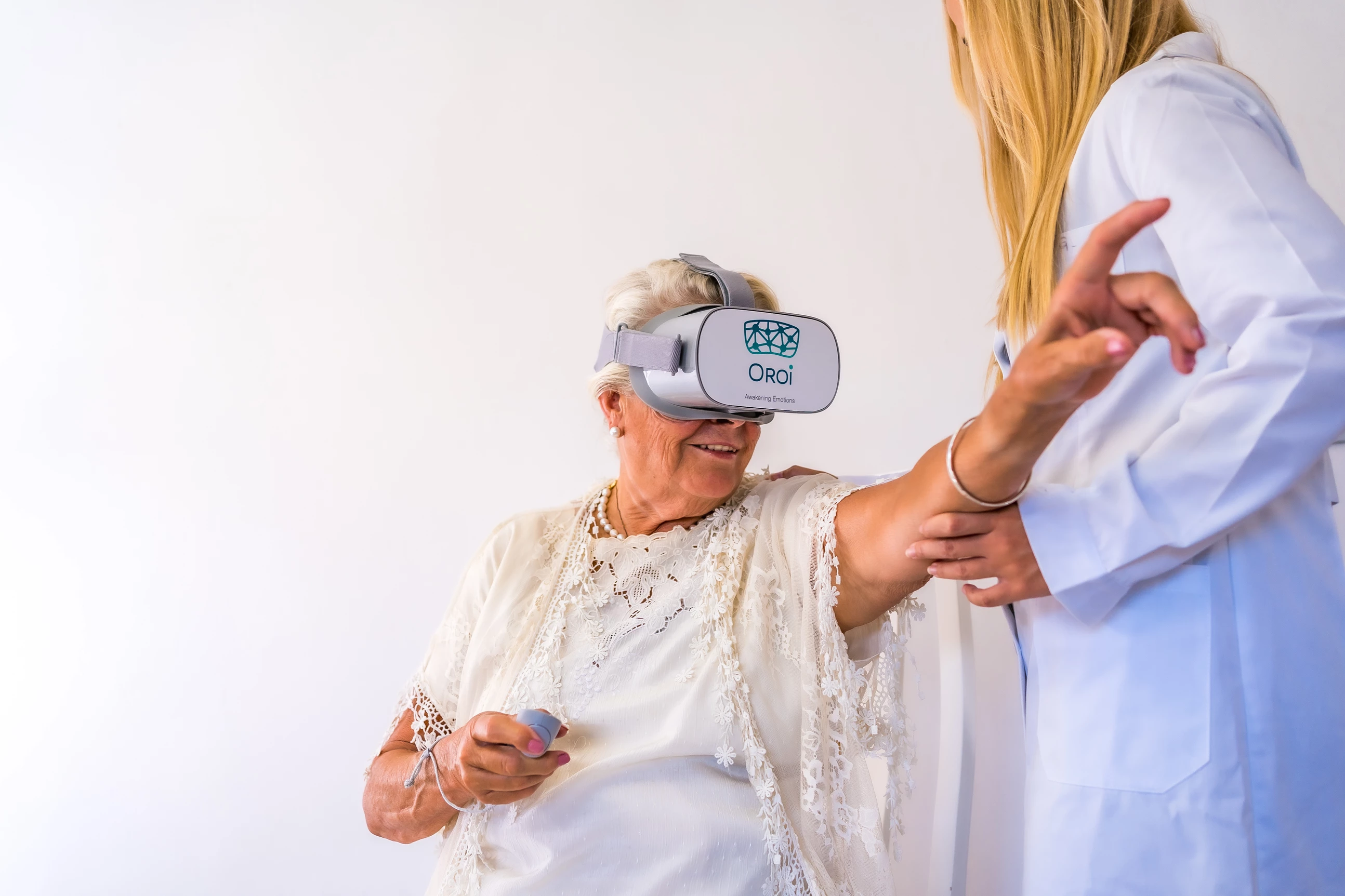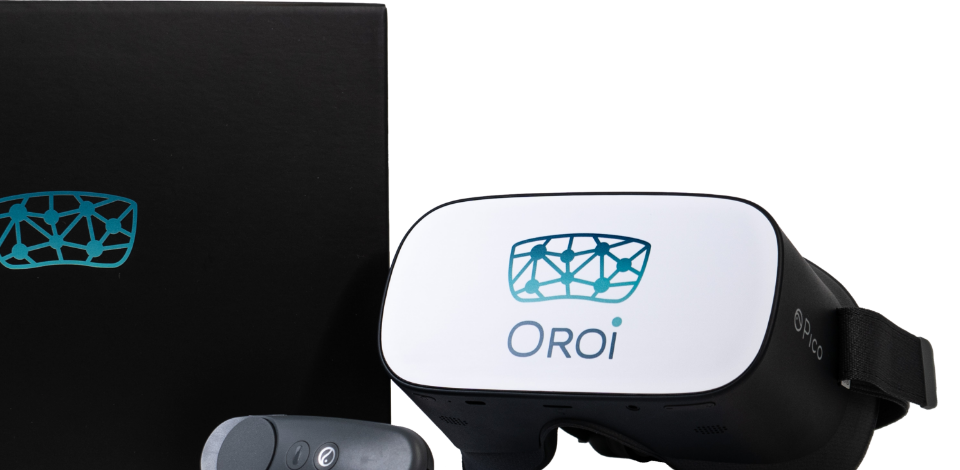News
How can virtual reality help in palliative care?
Adriana Gómez - - 5 Min
The World Health Organisation (WHO) defines palliative care as "an approach that improves the quality of life of patients and their families in the face of problems associated with life-threatening illness, through prevention and relief of suffering", as well as being a "support system to help patients live as actively as possible until death" [1].

How can virtual reality help in palliative care?
The symptoms exhibited by people undergoing palliative care are many and affect them differently from person to person. However, there are several that are common to most patients.
Pain is the most common symptom of concern for both the patient and the family [2]. Similarly, a large percentage report a slow perception of time [3,4], which leads to boredom, hopelessness, aversion, low interest in others and things and anhedonia [4], which at the same time leads to a depressed mood and more negative appraisals of the patient's quality of life [4].
Some indicators of what can be considered a successful adaptation for the person are: staying active in daily tasks; trying to minimise the impact of the disease on daily roles (e.g. partner, parent, employee) or trying to regulate habitual emotions during the disease [4].
This is why therapeutic interventions at this stage are focused on giving importance to emotions and relying on non-pharmacological treatments. Among the most common are music therapy [5, 6, 7], massage [7, 8, 9, 10, 11, 12], television distraction [13], hypnosis [14], behavioural therapy [14] and, recently, virtual reality therapies [14].
While traditional distraction techniques are still useful, technological advances in the field of virtual reality have shown great benefits in pain relief [15, 16, 17]. The more immersive the VR experience [16] and the more meaningful the environment is to the patient [17], the greater the benefits.
As always, we are interested in hearing what patients think after trying these new treatments. And in this case, patients report a 20-100% reduction in pain [18] and say they enjoy the experience and want to repeat it [18], which leads to an increase in patient engagement with the therapy, an increase in the previously mentioned interest in performing activities.
In addition, they describe it as a meaningful, entertaining and satisfying experience [19] with no side effects [18]. Patients especially recommend it for its distraction and relaxation [19].
In short, we have seen that a large percentage of people undergoing palliative care express fear of pain, an aspect that virtual reality has shown to have the capacity to reduce their perception.
Likewise, it has also shown improvements in common symptoms such as boredom, lack of interest in things and lack of enjoyment. Therefore, as these symptoms lead to a negative assessment of quality of life, virtual reality could be presented as a tool capable of improving the perceived quality of life of these patients.
References:
1. Álvarez, V.A., Luna, I.F., Torres, E.A., Higuita, A., Rivera, P.T. (2018). Tecnologías de la información y comunicación (TIC) aplicadas en cuidados paliativos: revisión de tema. Psicooncología 15(2): 345-360. doi: http://dx.doi.org/10.5209/PSIC.61440
2. Tabares, V.Z., Rodríguez, J.R., Silva, E. (2013). El dolor y su manejo en los cuidados paliativos. Panorama Cuba y Salud 8(2): 41-48.
3. Osorio-Lucena, A., Segura, B., Montoya-Juarez, R., García, M.P. (2019). Percepción subjetiva del tiempo y evaluación del estado emocional de pacientes con enfermedad crónica avanzada. Evidentia 16.
4. Couceiro, S., Zamora, M.J., Van-der Hofstadt, C.J. (2017). Áreas de exploración psicológica en pacientes paliativos y sus familiares: bases científicas y aspectos prácticos. Revista Española de Comunicación en Salud 8(2): 279-294. doi: https://doi.org/10.20318/recs.2017.4008
5. De Jong, A., Molinari, N., De Lattre, S., Gniadek, C., Carr, J., Conseil, M., Chanques, G. (2013). Decreasing severe pain and serious adverse events while moving intensive care unit patients: a prospective interventional study (the NURSE-DO Project). Critical care 17(2). doi: https://doi.org/10.1186/cc12693
6. Saadatmand, V., Rejeh, N., Heravi-Karimooi, M., Tadrisi, S.D., Vaismoradi, M., Jordan, S. (2015). Effects of natural sounds on pain: a randomized controlled trial with patients receiving mechanical ventilation support. Pain managment nursing 16(4): 483-492. doi: https://doi.org/10.1016/j.pmn.2014.09.006
7. Cole, L.C., LoBiondo-Wood, G. (2014). Music as an adjuvant therapy in control of pain and symptoms in hospitalized adults: a systematic review. Pain Managment Nursing 15(1): 406-425. doi: https://doi.org/10.101016/j.pmn.2012.09.010
8. Gitto, E., Pellegrino, S., Manfrida, M., Aversa, S., Trimarchi, G., Barberi, I., Reiter, R.J. (2012). Stress response and procedural pain in the preterm newborn: the role of pharmacological and non-pharmacological treatments. European journal of pediatrics, 171(6): 927-933.
9. Puntillo, K., Nelson, J.E., Weissman, D., Curtis, R., Weiss, S., Frontera, J. (2014). Advisory board of the improving palliative care in the ICU (IPAL-ICU) Project. Intensive Care Medicine 40(2): 235-248. doi: https://doi.org/10.1007/s00134-013-3153-z
10. Martorella, G., Boitor, M., Michaud, C., Gelinas, C. (2014). Feasibility and acceptability of hand massage therapy for pain management of postoperative cardiac surgery patients in the intensive care unit. Heart & Lung: The journal of critical care 43(5): 437-444. doi: https://doi.org/10.1016/j.hrtlng.2014.06.047
11. Adams, R., White, B., Beckett, C. (2010). The effects of massage therapy on pain management in the acute care setting. International Journal of Therapeutic Massage & Bodywork 3(1): 4-11.
12. Miozzo, A.P., Stein, C., Bozzetto, C.B., Plentz, R.D.M. (2016). Massage therapy reduces pain and anxiety after cardiac surgery: a systematic review and meta-analysis of randomized clinical trials. Clinical trials and regulatory science in cardiology: 23-24. doi: https://doi.org/10.10106/j.ctrsc.2016.11.003
13. Gelinas, C., Arbour, C., Michaud, C., Robar, L., Coté, J. (2013). Patients and ICU nurses’ perspectives of non-pharmacological interventions for pain managment. Nursing in critical care 18(6): 307-318. doi: https://doi.org/10.1111/j.14785153.2012.00531.x
14. Retrouvey, H., Shahrokhi, S. (2015). Pain and the thermally injured patient – a review of current therapies. Journal of burn care & research 36(2): 315-323. doi: https://doi.org/10.1097/BCR.0000000000000073
15. Lera, P.M. (2018). Uso de la realidad virtual en el control del nivel asociado a la venopunción en pacientes oncológicos pediátricos. Universidad de Lleida: Facultad de Enfermería y Fisioterapia.
16. Malloy, K.M., Milling, L.S. (2010). The effectiveness of virtual reality distraction for pain reduction: a systematic review. Clinical Psychology review (30): 1011-1018. doi: 10.1016/j.cpr2010.07.001
17. Niki, K., Okamoto, Y., Maeda, I., Mori, I., Ishii, R., Matsuda, Y., Takagi, T., Uejima, E. (2019). A novel palliative care approach using virtual reality for improving various symptoms of terminal cancer patients: a preliminary prospective, multicenter study. Journal of palliative medicine. doi: 10.1089/jpm.2018.0527
18. Prema-Forrest, L. (2017). Unlocking the potential of virtual reality in palliative care. BMJ Supportive & Palliative care 7(2): A22. Doi: 10.1136/bmjspcare-2017-hospice.61
19. Baños, R., Espinoza, M., García-Palacios, A., Cervera, J.M., Esquerdo, G., Barrajón, E., Botella, C. (2013). A positive psychological intervention using virtual reality for patients with advanced cancer in a hospital setting: a pilot study to asess feasibility. Support Care Cancer 21: 263-270. doi: 10.1007/s00520-012-1520-x


Neuigkeiten
Das Virtual Reality Unternehmen OROI ernennt Linda Hypki zur Direktorin für Marketing und Vertrieb

Neuigkeiten
Der Einsatz fing bei Computerspielen und Co. an und ist nun fester Bestandteil in der Pflege - VR

